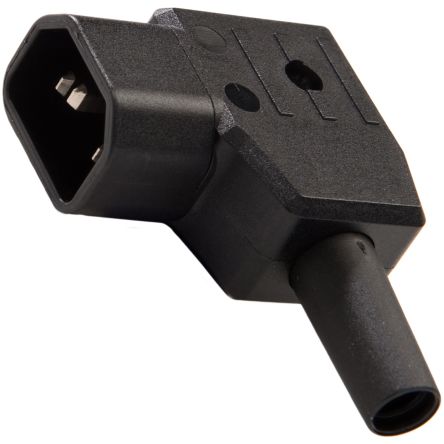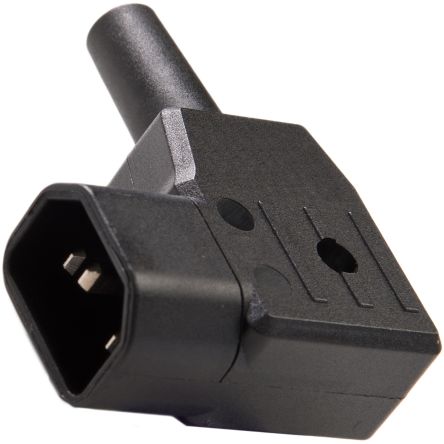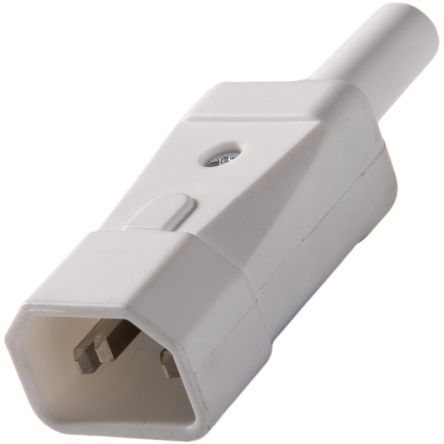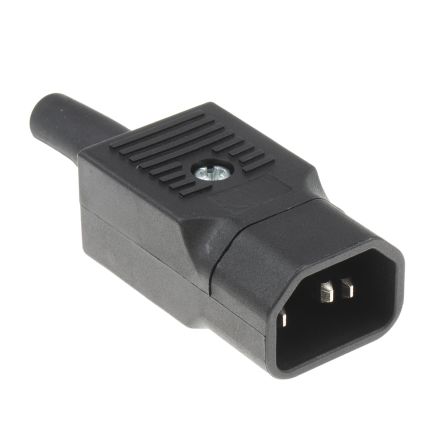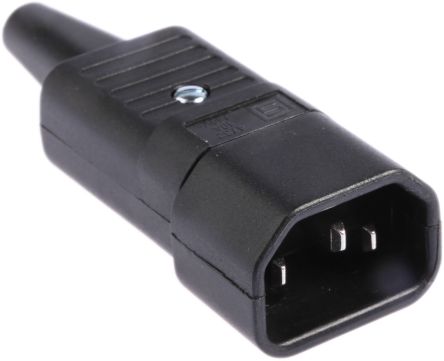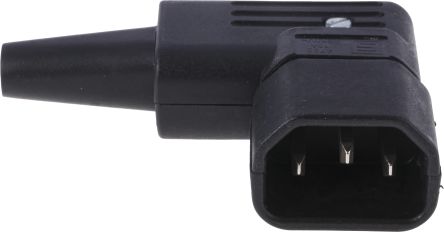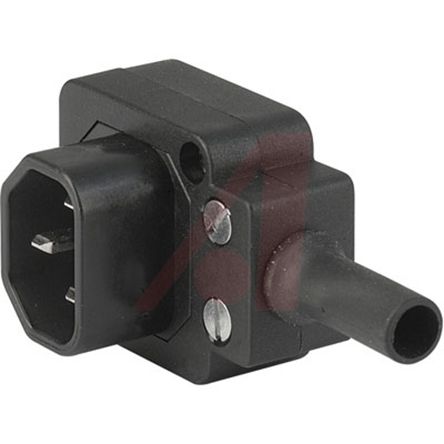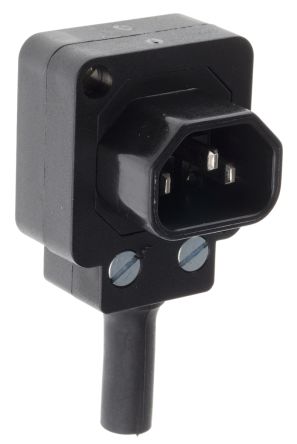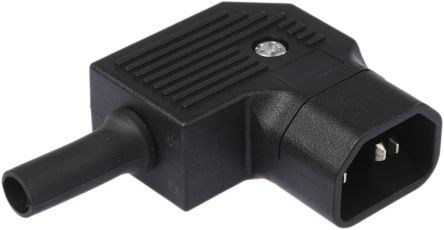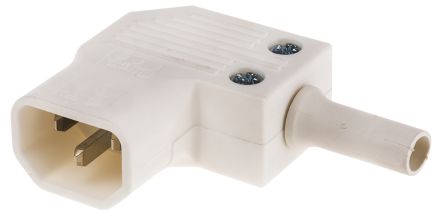- Automation & Control Gear
- Cables & Wires
- Enclosures & Server Racks
- Fuses & Circuit Breakers
- HVAC, Fans & Thermal Management
- Lighting
- Relays & Signal Conditioning
- Switches
- Batteries & Chargers
- Connectors
- Displays & Optoelectronics
- ESD Control, Cleanroom & PCB Prototyping
- Passive Components
- Power Supplies & Transformers
- Raspberry Pi, Arduino, ROCK, STEM Education & Development Tools
- Semiconductors
Kettle Plugs
IEC Connectors are used as power couplers for electrical appliances. IEC refers to the set of standards from the International Electrotechnical Commission, ensuring that the power cords for appliances conform to a standardised set of safety requirements for appliances not exceeding a 250 V ac voltage or 16 A rated current. From domestic kitchen equipment to computer hardware in office environments, the IEC connector is available in different sizes and shapes to accommodate the current, temperature and earthing requirements of different appliances.
How Do IEC Connectors Work?
IEC connectors are designed to provide a safe and standardised way to connect electrical devices to power sources. They operate on a simple principle: the male connector, attached to a power cord, plugs into the female connector, which is typically found on the device itself. The connection is secured by the physical shape of the connectors to ensure a snug fit.
IEC Types
- C1/C2 - Used for small electrical appliances such as electric trimmers or shavers.
- C5/C6 - Known as a cloverleaf, this IEC power connector is used in smaller electrical appliances such as projectors.
- C7/C8 - The figure-eight IEC connector is commonly used in personal stereo systems and some older laptop models.
- C13/C14 - This IEC connector is used for larger electrical appliances, such as kitchen appliances, instrumentation amplifiers and computer hard drives.
- C15/C16 - This IEC connector is often referred to as a kettle lead due to its use in powering electric kettles. They are well suited to this task due to their designation as a ’hot condition’ coupler and having a high-temperature rating.
- C15A/C16A - Is similar to the C15 and C16, but is rated for a higher temperature.
- C17/C18 - Is an unearthed IEC power connector that is used in audio applications when audio quality is a concern.
- C19/C20 - Is a power connector for high current applications, such as uninterruptible power supplies or power distribution units.
Industrial Applications of IEC Connectors
IEC connectors, including ports and socket pinouts, are vital components in various industrial settings for providing more secure and reliable connections. From powering heavy machinery in manufacturing plants to supporting automation systems, these connectors ensure smooth and efficient operations across the following industries:
Automation Industry
The automation industry relies heavily on IEC connectors to power and interconnect various components within complex systems. IEC plugs and jacks are ubiquitous in control panels, robotic arms, conveyor belts, and other automated machinery. The IEC connector pinout, a detailed diagram illustrating the arrangement of pins within the connector, is essential for ensuring correct wiring and preventing electrical faults.
Industrial Machinery
Industrial machinery often requires robust and dependable power connections to handle heavy-duty operations. IEC connectors, along with their standardised IEC socket pinouts, are commonly used in this sector due to their ability to withstand harsh environmental conditions and provide secure connections. The standard pinout configuration ensures compatibility and ease of installation, making them ideal for a wide range of equipment. These connectors are found in machinery such as manufacturing machines, assembly lines, and heavy-duty power tools, where durability and worker safety are crucial.
To learn more about ensuring the safety of your workers in industrial environments, read our guide on safety signs here.
Telecommunications
In the telecommunications sector, IEC connectors are used to power and connect a wide range of equipment, from servers and routers to base stations and antennas. The IEC port is a common feature in telecommunications racks, providing a convenient point of connection for power cords. The IEC connector pinout is crucial for ensuring compatibility between different devices and preventing signal interference. The use of standardised IEC connectors simplifies the installation and maintenance of telecommunications infrastructure, thereby reducing costs and improving overall network reliability.
Medical Equipment
IEC connectors are also used to power and connect various devices, such as diagnostic imaging machines, surgical equipment, and patient monitoring systems. The IEC socket pinout for medical equipment is often designed to meet specific safety standards to ensure the safety of patients and operators.
Frequently Asked Questions About IEC Connectors
Are All IEC Plugs the Same?
IEC plugs come in various types, each designed for specific applications and power requirements. While they share a standardised design, they are not all the same. For example, there are 2-pin IEC connectors used primarily for low-power applications, such as connecting small electronics or chargers. These connectors differ from the more common 3-pin IEC connectors, like C13 and C14, which are used for higher-power devices. The differences in pin configuration, shape, and size ensure that each type of IEC connector is compatible with specific devices and power ratings.
What is the Difference Between IEC Connector C13 and C14?
The IEC C13 and C14 connectors are commonly used in many electronic devices, especially in power supply cords for computers and other equipment. The C13 is the female connector, typically found on the end of the power cord, while the C14 is the male connector, often located on the power supply unit or device. The key difference lies in their usage: the C13 connector plugs into the C14 socket. This design prevents incorrect connections and ensures that devices receive the appropriate power input.
What is the Power Rating of IEC Connectors?
The power rating of IEC connectors varies depending on the specific type. For example, the IEC C13 and C14 connectors are typically rated for 10A at 250V AC. This makes them suitable for most consumer electronics and computing equipment. Other IEC connectors, such as the C19 and C20, can handle higher currents, often up to 16A at 250V AC. The power rating is an essential consideration when selecting an IEC connector, as using a connector with an insufficient rating can lead to overheating or damage to the device.
What is the Voltage of the IEC Connector?
IEC connectors are designed to handle a standard voltage of up to 250V AC. This voltage rating makes them suitable for use in various regions worldwide, as they can accommodate different electrical standards. The 250V rating is common across most IEC connector types, including C13, C14, C19, and C20.
What is the Difference Between IEC Connector C19 and C20?
The main difference between IEC C19 and C20 connectors is that the C19 connector is the female end, typically found on the power cord, while the C20 is the male end, usually on the equipment or power distribution unit. These connectors are rated for 16A at 250V AC, making them suitable for use with equipment that requires more power, such as servers, data centre equipment, and power distribution units.
Delivery Information
Get IEC connectors at RS Malaysia. Now, you can order various IEC power connectors, jacks, plugs, and ports via our website or by calling +603 5021 5888. We provide free delivery services for standard shipments, and the option for same-day delivery for more urgent needs. For more details on our shipping options, please check out our comprehensive delivery information page.

